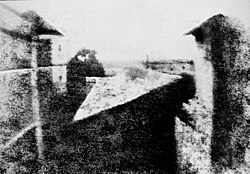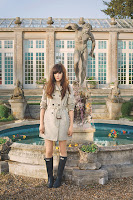Erik Knudsen ...
Erik Knudsen is Professor of Film Practice at the University of Salford in Manchester, UK, where he is currently the Head of The School of Media Music and Performance. He regularly conducts guest workshops at international film schools, such as the Escuela Internacional de Cine y Television in Cuba, where he was Head of Editing between 2001 and 2009.He was born in Ghana to a Danish father and Ghanaian mother in 1956. He grew up, and was primarily educated, in Denmark, with a few years of schooling in Britain. After a stint of Law studies at Århus University in Denmark, he then went on to study film production at York University in Toronto, Canada, from where he graduated with a Bachelor of Fine Arts with Specialist Honours in Film Production in 1983. He returned to Britain in 1984, where he has lived and worked since. He gained his PhD from the University of Salford, 2002.
Erik Knudsen is Professor of Film Practice at the University of Salford in Manchester, UK, where he is currently the Head of The School of Media Music and Performance. He regularly conducts guest workshops at international film schools, such as the Escuela Internacional de Cine y Television in Cuba, where he was Head of Editing between 2001 and 2009.He was born in Ghana to a Danish father and Ghanaian mother in 1956. He grew up, and was primarily educated, in Denmark, with a few years of schooling in Britain. After a stint of Law studies at Århus University in Denmark, he then went on to study film production at York University in Toronto, Canada, from where he graduated with a Bachelor of Fine Arts with Specialist Honours in Film Production in 1983. He returned to Britain in 1984, where he has lived and worked since. He gained his PhD from the University of Salford, 2002.
In 2009 Erik made the short documentary set in Cuba, Vainilla Chip. This was during a break in the filming for his latest feature film, The Silent Accomplice, which was completed in early 2010. In 2008, he collaborated with the renowned theatre company, Hourse & Bamboo Theatre Company, to make the visual moving image components of their touring show, Veil. 2006 proved another busy year in which he completed two films: the documentary,Heart of Gold, and his fiction feature film, Sea of Madness. His previous film, Brannigan’s March, was released in February 2004. Previously, the documentary film Bed of Flowers, was completed in February 2001. Signs of Life, a fiction feature film, was completed in June 1998. Reunion, was completed in 1995 to a commission by Channel Four Television. Before that, One Day Tafo, commissioned by the Danish National Film Board, shot on location in Denmark and Ghana, won the bronze award at the 1991 Houston International Film Festival and was subsequently invited to compete in the 1991 San Sebastian Film festival in Spain. This film was also broadcast by Channel Four Television.
Prior to these films, Erik scripted and directed more than half a dozen short films, including Stray Dogs Can't Find Their Way Home and The Chastity of Jenny. He has optioned a number of screenplays to other producers, such as On A Starry Night to Strawberry Vale Productions, London, and Whose Gambit to Brian Eastman at Carnival Films, London.
As well as working with film he has also produced some really nice series of imagery, my favorite series on which i saw when looking through his work was called ... Cuba Waiting, the photographs included in the series aren't perfect and out preformed out there just normal everyday images which have also been taken on a normal camera. This particular series of photographs have been produced into a book and also an exhibition. Below are a few images which i have taken from the artist which really caught my eye.
Even though the photographs are not very sharp they are still very meaningful and show what other people around the world have to go through and even though when times get hard they are still smiling and are happy with anything that they can get there hands onto. With the photograph on the bottom left hand side i love the colours which are within the image itself, it just shows how old and rusty everywhere is because the people of Cuba can not afford the money to fix it up but i just love the textures which are included with the colours and it's just a very simple image and the composition on the image is very simple because you have got the door which is in the center of the photograph which makes you look straight to the center and then your eyes focus out to the rest of the wall, the photograph really makes you think about what life must be like for them.
Jill Cole ...
Jill Cole is currently working within the national forest and she likes to create imagery which is to do with the changing land use and the conflict which is currently happening on the land. when she is out in the national forest there are certain words that are always popping up in her head which she thinks that the national forest is about; which are change ... time ... layers ... diversity ... multiplicity ... coexistence ... conflict ... catalyst ... incomplete ... embryonic. Jill Cole likes going into landscape photography and one if the book which she thinks really helps her is; Land Matters - Liz Wells. One of her main focuses that she likes to look at while in the national forest is the change and the conflict in the landscape which is what she is trying to show within her imagery. One of Jill Cole's main priorities is that she tries to say what she wants to say through her imagery without any writing involved within the imagery itself.
The camera what she normally uses for her work was a film camera when she was developing her skills but now she is using a 5D mark two camera to expand on her skills even more and to she what different types of work she can create ... with her national forest work she has; at the moment got 1O images which she still reckons needs a few more little pieces adding to them ... the 1O images which she has at the moment she has simply created by selecting around 2 - 3 photographs and then simply layered them on top of each other and then turned the opacity done so that you can see the images together. She took a lot of thought into what images are going to look better together.
previous work ...
With a lot of her previous work she has mainly built herself up around the subject ... Birds.
Birds, 2OO7 - 2OO8 ...
created over eighteen months on british military land, this series shows birds captured for scientific and conservation research on a nature reserve within an army garrison in north yorkshire. As part of a national bird ringing programme birds are caught during flight in fine nets erected between poles. Trained ringers maintain high levels of welfare throughout the process capture, data collection, ringing and release. By allocating each with a unique number the birds are identified as individuals whilst contributing to a broader understanding of the movement and population changes of their species as a whole. The series is drawn from a larger body of work centered on military training land which has included winter landscapes of military firing ranges and portraits of young army recruits on paint balling exercise. Through this work by referencing the interrelationship between conflict, beauty and renewal, the aim has been to locate our own, distanced realities within an ongoing presence of war.
Below are a few of the photographs which have been included in that series ...
this collection of imagery really does freak me out because they look dead and that's not the type of photography which i prefer but when i read through her personal statement which i have shown above the photographs i slowly began to realize what her work is about. What i love about her work is the action which is involved in the work , i love the movement which is being shown within her imagery and even if they are not in focus i still really like the colours that are within the photograph and also it makes the photographs look very abstract. Even though her imagery isn't very strong with focusing on the main subject but she makes her work look very artistic because of the colours and the movement of the subject and makes you really look deep into the photograph itself.
























